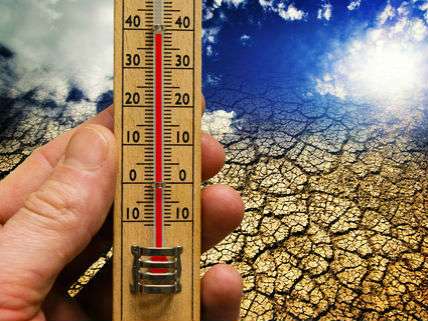World Could Still Keep Future Man-Made Warming Below 2 Degrees Celsius
So says the new U.N. analysis of national climate plans from 146 countries

A universal climate treaty is supposed to be negotiated at the U.N. Climate Change Conference in Paris this December. At the center of this process are Intended Nationally Determined Contributions (INDCs) in which countries make various pledges with regard to how they plan to address their greenhouse gas emissions. For example, the Obama administration pledged earlier this year that the United States would reduce its emissions by 26-28 percent below 2005 levels by 2025. The ultimate goal of the treaty is to keep the modeled future average temperature of the globe below an internationally agreed-upon threshold of 2 degrees Celsius above the pre-industrial average.
In advance of the Paris conference, nearly 150 countries have submitted their INDCs to the secretariat of the United Nations Framework Convention on Climate Change (UNFCCC). The UNFCCC has released its Synthesis Report analysis of those INDCs to see if, when summed together, they put humanity on the track toward fulfilling the 2 degree Celsius threshold. The answer is, no. But the always diplomatically optimistic UNFCCC concludes the commitments are a good start.
From UNFCCC press release:
One of the key findings is that the INDCs will bring global average emissions per capita down by as much as 8% in 2025 and 9% in by 2030
"The INDCs have the capability of limiting the forecast temperature rise to around 2.7 degrees Celsius by 2100, by no means enough but a lot lower than the estimated four, five, or more degrees of warming projected by many prior to the INDCs," said [Christiana] Figueres, [Executive Secretary of the UNFCCC].
The secretariat report does not directly assess implications for temperature change by the end of the century under the INDCs because information on emissions beyond 2030 is required. However, other independent analyses have, based on a range of assumptions, methodologies and data sources, attempted to estimate the impact of the INDCs on temperature leading to a range of average estimates below, at or above 3 degrees C. Importantly all deliver more or less similar emission levels in 2025 and 2030 and all confirm that the INDCs, if fully implemented, are an important advance on previous scenarios. …
As well as the impact on per capita emissions, the report shows that INDCs are expected to slow emissions growth by approximately a third for 2010–2030 compared to the period 1990–2010, delivering emission reductions of around 4Gt by 2030 compared to pre-INDC scenarios.
Interestingly, the U.N.'s Intergovernmental Panel on Climate Change (IPCC) laid out a planetary carbon dioxide budget in its latest science report. In order to have a 66 percent chance of keeping future temperatures below the modeled 2 degree Celsius threshold humanity, roughly speaking, should emit no more than an additional 1,000 billion tons of carbon dioxide.
Given the announced INDCs, the UNFCCC's new Synthesis Report calculates that annual greenhouse gas emissions will continue to rise and be 37 to 52 percent higher in 2030 than they were in 2010. As a result, by 2030 humanity will have emitted an additional 750 billion tons of carbon dioxide, leaving only 250 billion tons in the budget. This implies that much steeper reductions would subsequently be required in order to stay below the modeled 2 degree Celsius threshold.
Update: Activists claim the INDCs are way too little, way too late. In an email from the civil society Fair Shares group, activist Nathan Thanki decried the UNFCCC's characterization of the INDCs as a "down payment" for future climate pledges:
"Rather than 'down-payments' on ambition, we need deep cuts now: rich developed countries must make at least 80% emission cuts at home and help the poor develop cleanly in order meet their fair share of the bill. If not, it will be millions of the poorest families on the front lines of the climate crisis who have to pay the price. But if they did undertake their fair share of climate action, it would herald the end our addiction to polluting energy today, not tomorrow, protect our food systems and help build a safer, cleaner and a fairer world for us all."
For more background on climate activists' demands see my article, "The 'Climate Justice' Fantasy."
Note: I will be issuing daily dispatches from the Paris Climate Conference during the second week of December.



Show Comments (88)